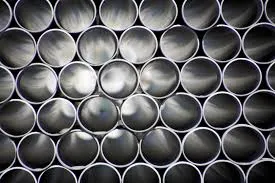
-
 Afrikaans
Afrikaans -
 Albanian
Albanian -
 Amharic
Amharic -
 Arabic
Arabic -
 Armenian
Armenian -
 Azerbaijani
Azerbaijani -
 Basque
Basque -
 Belarusian
Belarusian -
 Bengali
Bengali -
 Bosnian
Bosnian -
 Bulgarian
Bulgarian -
 Catalan
Catalan -
 Cebuano
Cebuano -
 China
China -
 China (Taiwan)
China (Taiwan) -
 Corsican
Corsican -
 Croatian
Croatian -
 Czech
Czech -
 Danish
Danish -
 Dutch
Dutch -
 English
English -
 Esperanto
Esperanto -
 Estonian
Estonian -
 Finnish
Finnish -
 French
French -
 Frisian
Frisian -
 Galician
Galician -
 Georgian
Georgian -
 German
German -
 Greek
Greek -
 Gujarati
Gujarati -
 Haitian Creole
Haitian Creole -
 hausa
hausa -
 hawaiian
hawaiian -
 Hebrew
Hebrew -
 Hindi
Hindi -
 Miao
Miao -
 Hungarian
Hungarian -
 Icelandic
Icelandic -
 igbo
igbo -
 Indonesian
Indonesian -
 irish
irish -
 Italian
Italian -
 Japanese
Japanese -
 Javanese
Javanese -
 Kannada
Kannada -
 kazakh
kazakh -
 Khmer
Khmer -
 Rwandese
Rwandese -
 Korean
Korean -
 Kurdish
Kurdish -
 Kyrgyz
Kyrgyz -
 Lao
Lao -
 Latin
Latin -
 Latvian
Latvian -
 Lithuanian
Lithuanian -
 Luxembourgish
Luxembourgish -
 Macedonian
Macedonian -
 Malgashi
Malgashi -
 Malay
Malay -
 Malayalam
Malayalam -
 Maltese
Maltese -
 Maori
Maori -
 Marathi
Marathi -
 Mongolian
Mongolian -
 Myanmar
Myanmar -
 Nepali
Nepali -
 Norwegian
Norwegian -
 Norwegian
Norwegian -
 Occitan
Occitan -
 Pashto
Pashto -
 Persian
Persian -
 Polish
Polish -
 Portuguese
Portuguese -
 Punjabi
Punjabi -
 Romanian
Romanian -
 Russian
Russian -
 Samoan
Samoan -
 Scottish Gaelic
Scottish Gaelic -
 Serbian
Serbian -
 Sesotho
Sesotho -
 Shona
Shona -
 Sindhi
Sindhi -
 Sinhala
Sinhala -
 Slovak
Slovak -
 Slovenian
Slovenian -
 Somali
Somali -
 Spanish
Spanish -
 Sundanese
Sundanese -
 Swahili
Swahili -
 Swedish
Swedish -
 Tagalog
Tagalog -
 Tajik
Tajik -
 Tamil
Tamil -
 Tatar
Tatar -
 Telugu
Telugu -
 Thai
Thai -
 Turkish
Turkish -
 Turkmen
Turkmen -
 Ukrainian
Ukrainian -
 Urdu
Urdu -
 Uighur
Uighur -
 Uzbek
Uzbek -
 Vietnamese
Vietnamese -
 Welsh
Welsh -
 Bantu
Bantu -
 Yiddish
Yiddish -
 Yoruba
Yoruba -
 Zulu
Zulu
Exploring Efficient Data Transfer Solutions with FRP Pipeline Technology
Understanding FRP (Fiber Reinforced Polymer) Pipeline Technology
In recent years, the advancement of materials science has led to the development of innovative solutions to common engineering challenges. One such innovation is the Fiber Reinforced Polymer (FRP) pipeline, which offers a range of advantages over traditional materials like steel and concrete. As industries continuously seek to enhance efficiency while minimizing costs, understanding FRP technology and its applications becomes increasingly crucial.
What is FRP?
FRP is a composite material made from a polymer matrix reinforced with fibers, typically glass, carbon, or aramid. The combination of a polymer matrix with these high-strength fibers results in a material that is lightweight, strong, and resistant to corrosion. This unique set of properties makes FRP an appealing choice for a variety of applications, particularly in construction and infrastructure, where durability and longevity are paramount.
Advantages of FRP Pipelines
1. Corrosion Resistance One of the primary advantages of FRP pipelines is their resistance to corrosion. Traditional metals like steel are prone to rusting when exposed to moisture and certain chemicals, leading to structural failures and costly repairs. In contrast, FRP materials can withstand harsh environmental conditions, such as chemical exposure and saline environments, significantly extending the lifespan of the pipeline.
2. Lightweight Yet Strong FRP pipelines are considerably lighter than their steel counterparts, making them easier to transport and install. This lightweight nature reduces installation costs and time, as heavy lifting equipment is often unnecessary. Despite their light weight, FRP pipelines possess impressive tensile strength, supporting the transportation of a wide range of fluids, including water, oil, and gas.
frp pipeline

3. Cost-Efficiency Though the upfront cost of FRP materials can be higher than that of traditional materials, the long-term savings are noteworthy. The reduced maintenance needs, combined with the extended lifespan of FRP pipelines, lead to significant savings over time. Additionally, the lightweight property reduces transportation and labor costs during installation, providing a more economical solution overall.
4. Thermal Insulation Properties FRP pipelines exhibit excellent thermal insulation properties, which help maintain the temperature of the fluids being transported. This feature is especially beneficial for pipelines carrying heated substances. It minimizes energy loss through thermal conduction, contributing to more efficient processes and reduced operational costs.
5. Design Flexibility The versatility of FRP materials allows for innovative designs that traditional materials may not support. FRP pipelines can be fabricated to meet specific spatial constraints or operational requirements, facilitating the development of unique and efficient flow systems.
Applications of FRP Pipelines
FRP pipelines find applications across various sectors due to their advantageous properties. In the oil and gas industry, they are utilized for transporting hydrocarbons, withstanding harsh conditions without the risk of corrosion. In the water treatment and distribution sectors, FRP pipelines are increasingly employed, particularly in environments where corrosion-resistant solutions are needed—such as wastewater management. Furthermore, their application extends to chemical processing and food production industries, where clean, contaminant-free piping is vital.
Conclusion
As industries quest for more sustainable and economical solutions, FRP pipeline technology offers a promising alternative. The combination of corrosion resistance, lightweight strength, and cost-efficiency positions FRP pipelines as a leading choice for modern infrastructure needs. As the technology continues to evolve and its applications expand, FRP is likely to play an increasingly central role in shaping the future of pipeline engineering and beyond. With ongoing research and development, we can expect to see even more innovative uses and improvements in FRP technologies, enhancing efficiency and sustainability across multiple sectors.
Latest news
-
Exploring the Benefits of Top Hammer Drifter Rods for Enhanced Drilling PerformanceNewsJun.10,2025
-
High-Precision Fiberglass Winding Machine for GRP/FRP Pipe Production – Reliable & Efficient SolutionsNewsJun.10,2025
-
FRP Pipes & Fittings for Shipbuilding - Corrosion-Resistant & LightweightNewsJun.09,2025
-
Premium FRP Flooring Solutions Durable & Slip-ResistantNewsJun.09,2025
-
Premium Fiberglass Rectangular Tanks Durable & Lightweight SolutionNewsJun.09,2025
-
Tapered Drill String Design Guide Durable Performance & UsesNewsJun.09,2025









